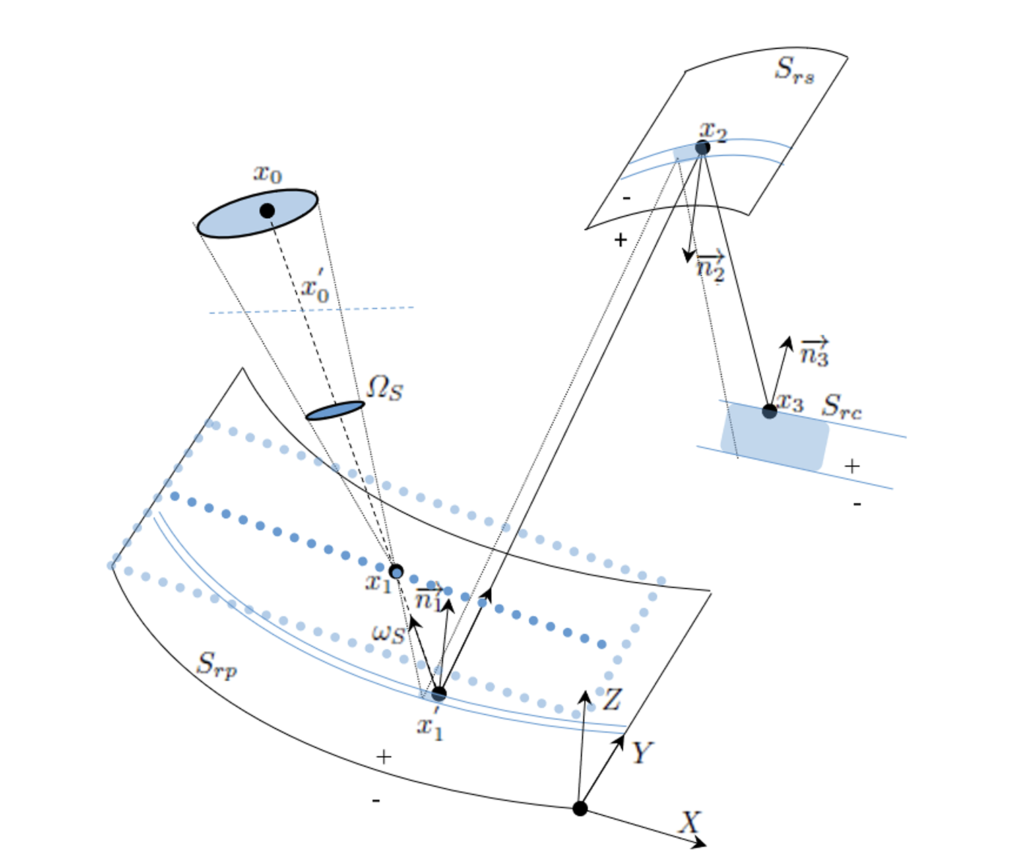Study and validation of a fast method to determine density flux maps provided by symmetric solar concentration systems
- Post by: SOAPHYS-KZ
- 14 août 2024
- Comments off


http://dx.doi.org/10.46411/jpsoaphys.2024.CJK.008
Section de la parution: Informations de publication
Study and validation of a fast ray tracing method to determine density flux for symmetric solar optical systems
J. P. Soaphys, Vol 4, N°1 (2024) CJKA08
Pages : CJKA08-1 à CJKA08 -7
Informations sur les auteurs
Stanislas SANFO.1, Serge Dimitri Bazyomo. 2, Tizane Daho.1, Abdoulaye Ouedraogo.1
1Laboratoire de Physique et de Chimie de l’Environnement (LPCE), Département de Physique, Unité de Formation et de Recherche en Sciences Exactes et Appliquées, BP 7021, Université Joseph KI–ZERBO, Ouagadougou, Burkina Faso.
2Laboratoire de Thermique et des Energies Renouvelables Departement de Physique, Unité de Formation et de Recherche en Sciences Exactes et Appliquées, BP 7021, Université Joseph KI–ZERBO, Ouagadougou, Burkina Faso.
Corresponding author e-mail : sanfo_stanislas@yahoo.fr
RESUME
In this research paper, a computational program called MCMRDF-3D, is developed and validated by comparison with a reference software. MCMRDF-3D is formulated on Multi-Ray Monte Carlo Method for the determination of the distribution of solar irradiation along the receiver of any solar-concentrating system that withstand translational or rotational symmetries. This code incorporate an advantageous approach that consist in estimating the overall distribution of irradiation of a large scale solar concentrating systems on the basis of a consistent sample, then saving computation time, processor capacity and storage memory. The paper presents the new approach and applied it to determine the distribution of irradiation provided by three concentrators. We compare the processing time, the irradiation map rendering, and the size of numeric data, to those provided by a Reference software. The obtained irradiation distribution and power harvesting quantities over the receiver matches very well. We conclude that MCMRDF-3D proves to easy, fast, accurate and reliable approach for the simulation of solar concentrator system. Among other implications, this work opens a path for saving time when studying numerous symmetrical imaged and non-imaged optical systems. For future work, this time saving and flexible program will be of a significant help to envision optical errors from real behavior of optical surface in concentrating systems.
Mots-Clés : radiative transfert, simulation, fast processing, numeric method, essay validation
REFERENCES
Myriam D., Stéphane A., Fabrice S., and El H.
M, 2013. Modeling of radiative exchanges in an automotive lighting system
using the Monte Carlo method », In Proceedings of SFT.
Veynandt
F., 2011. Heliothermodynamic cogeneration with linear Fresnel concentrator:
modeling of the entire process », Doctoral thesis, National Polytechnic
Institute of Toulouse, University of Toulouse.
Farges O., Bezian J.-J., HAFI M. E., and BRU
H., 2012. Simulation of the annual performance of a concentrated solar
energy installation », In 18th SolarPACES Conference.
De la Torre J.D., 2011. Sensitivity calculations by the
Monte-Carlo method, for the design of concentrated solar energy processes », Doctoral thesis, National Polytechnic
Institute of Toulouse.
Carlini M., Cattani C., and Tucci A.O., 2011.
Optical Modeling of Square Solar Concentrator », Vol. 6785.
Blanco M.J., 2003. Tonatiuh: An
object oriented, distributed computing, Monte-Carlo ray tracer for the design
and simulation of solar concentrating systems« , Bounding technical report, The University of
Texas at Brownsville, Brownsville, Texas.
Wendelin, T., and Lewandowski, A., 2013. SolTrace:
A Ray-Tracing Code for Complex Solar Optical Systems », Technical
Report, National Renewable Energy Laboratory and Allan Lewandowski Solar
Consulting and LLC.
Cole I.R., and Gottschalg R., 2015. Optical
modeling for concentrating photovoltaic systems: insolation transfer variations
with solar source descriptions« , IET
Renewable Power Generation, Vol. 9, n°5, pp. 412–419.
Stanislas Sanfo, and Abdoulaye Ouedraogo,
2015. Contribution to the Optical Design of a Concentrator with Uniform Flux
for Photovoltaic Panel », Advances in Energy and Power, Vol.3, N°3, pp.
82-89.
Sebastian-James Bode1 and Paul Gauché., 2012.
Review of optical software for use in concentrating solar power systems« , SASEC, 1st Southern African Solar Energy
Conference, pp. 21-23.
Chong K.K., Wong C.W., Siaw F.L., and Yew
T.K., 2010. Optical characterization of nonimaging planar concentrator for
the application in concentrator photovoltaic system« , Journal
of Solar Energy Engineering, Vol. 132, N°1, pp. 11011-11019.
Stanislas Sanfo., 2015. Design et caractérisation optique d’un
concentrateur solaire à distribution uniforme de l’irradiation pour une
application photovoltaïque« . Thèse de
Doctorat Unique, Université de Ouagadougou (Nouvellement Université Joseph KI
ZERBO), Burkina Faso.
M.J. Blanco, 2006. Current status of
Tonatiuh – A computer program for the simulation of solar concentrating systems« ,
16th Workshop on Crystalline Silicon Solar Cells & Modules, Aug. 6–9,
Denver, CO.
K. Beck and C. Andres, 2004. Extreme
Programming Explained« . Embrace Change, 2nd Edition. Addison Wesley.
J. McAffer and J.M. Lemieux, 2006. Rich
Client Platform« . Addison Wesley, Eclipse.
Sergio Ortiz, Damian Siedlecki, Laura Remon,
and Susana Marcos, 2009. Three-dimensional ray tracing on Delaunay-based
reconstructed surfaces« . Applied Optics, Vol. 48, N°. 20.


